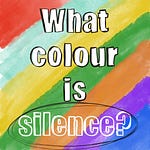🎧 Listen to the podcast episode above.
Don’t forget, paid subscribers get extra bonus content. 🔥
The Gömböc, Stability, and the Art of Tension and Release
What if I told you that a small, unassuming object—something that looks like a slightly misshapen pebble—could reveal profound truths about art, music, and even life itself?
Meet the Gömböc, a shape that exists at the very edge of mathematical possibility. It has only two equilibrium points: one stable, one unstable. No matter how you set it down, it will always right itself, but only after wobbling, hesitating, and resisting before finding its balance again.
BTW, “Gömböc” is pronounced “goemboets”
The Gömböc, discovered by Hungarian mathematicians Gábor Domokos and Péter Várkonyi, is a physical manifestation of a theoretical idea—an object that is both inevitably stable and perpetually unstable at the same time. And that paradox has been on my mind lately, especially in my work with graphic scores and experimental music composition.
The question whether Gömböc-type objects exist or not was posed by the great Russian mathematician Vladimir I. Arnold at a conference in 1995, in a conversation with Gabor Domokos. Arnold is considered to be one of the most influential scientists of the 20th century
Here’s a film about the Gömböc, featuring its inventors.
I have two key questions.
What does the geometry of a Gömböc SOUND like?
And how can I represent this sound in a graphic score?
The Dance of Stability and Instability in Composition
In music, the concept of tension and release is fundamental. Without tension—whether harmonic, rhythmic, or textural—music would be static, lifeless. The interplay between tension and resolution is what makes music move, breathe, and affect us. This is why a cadence that never resolves leaves us feeling unsettled, or why a sudden key change can make our hearts leap.
Much like the Gömböc, a piece of music is constantly shifting between unrest and equilibrium, exploring the delicate tipping points between balance and imbalance. A well-composed piece will never stay entirely in one state; it moves, much like the Gömböc itself, through moments of stability and instability, always in flux.
These musings are why I find the intersection between this intriguing shape and music composition so fascinating.
And beyond this, can the Gömböc tell us something about our inner selves, and the wider world?
Life as a Gömböc: Finding Balance in Instability
I think we all feel like Gömböcs at times. I know I do! Life throws me off balance, and just as I start to steady myself, something nudges me off-center again. But here’s the thing: the Gömböc doesn’t resist its instability—it works with it. It leans into the wobble, knowing that balance will come, but only after movement and adjustment.
The Gömböc reminds me that it’s just a matter of time before I regain my balance.
I find that idea incredibly powerful. Stability isn’t the absence of movement—it’s the ability to return to equilibrium after being knocked off course. This is true in art, in creative careers, in ourselves, and in the world at large.
The most stable systems aren’t the ones that never experience chaos; they’re the ones that know how to respond to it.
The Gömböc in the natural world
While the Gömböc shape is rare in nature due to its sensitivity to imperfections, certain natural forms exhibit Gömböc-like properties:
Indian Star Tortoise (Geochelone elegans): The highly domed shell of the Indian star tortoise resembles the Gömböc shape. This geometry aids the tortoise in self-righting when flipped onto its back, allowing it to return to its stable equilibrium position with minimal effort. The shell's design enables the tortoise to roll back to its feet without significant reliance on limb movement.
Pebbles and Natural Erosion: While true Gömböc shapes are not commonly found among natural pebbles due to their highly specific geometrical properties, the process of natural abrasion tends to reduce the number of equilibrium points in pebbles over time. This gradual evolution moves their shapes closer to that of a Gömböc, though a perfect Gömböc is an unattainable endpoint in natural processes.
These examples illustrate how certain natural forms have evolved geometries that mirror the unique balance properties of the Gömböc, highlighting the interplay between shape and function in the natural world.
Fascinating, isn’t it?!
Applying the Gömböc to Graphic Scores and Sound Art
In my graphic score compositions, I’ve been thinking about how to reflect this concept visually.
How can a score depict an inevitable return to balance, while still embracing instability?
Perhaps it’s through form—shapes that imply tipping and shifting—or through performance instructions that invite musicians to play at the edges of control.
Imagine a score where sound rolls like a Gömböc, tipping precariously, resisting resolution, then finding its way back to a place of rest. Or a piece where musicians are asked to destabilise a phrase, only to organically return to stability. What does that sound like? What does it feel like?
I’m working on some graphic scores that I hope will start to answer these questions, but I know one thing: the Gömböc isn’t just a shape. It’s an idea. It’s a metaphor for life, music, and art—a reminder that balance isn’t something we find, but something we create, over and over again.
I’d love to hear your thoughts—how do you experience stability and instability in your own creative work? Let’s keep the conversation going.










Share this post